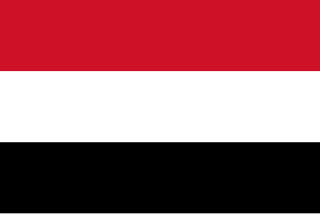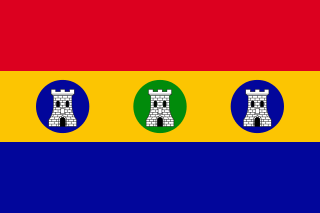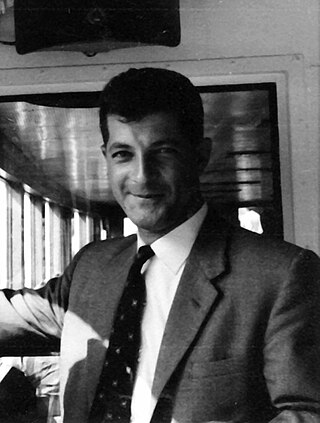
Hadhramaut is a geographic region in southern Arabia, comprising mainly of the eastern Governorates of Yemen, the Dhofar Governorate in south-western Oman and the Najran Province in southern Saudi Arabia. The name is of ancient origin, and is retained in the name of the Yemeni Governorate of Hadhramaut. The people of Hadhramaut are called Hadharem. They formerly spoke Hadramautic, an old South Arabian language, but they now predominantly speak Hadhrami Arabic.

The national flag of Yemen was adopted on 22 May 1990—the day of the Yemeni unification. The flag of Yemen resembles the Arab Liberation Flag of 23 July 1952, introduced after the Egyptian Revolution of 1952 in which Arab nationalism was a dominant theme. The Arab Liberation Flag of 23 July 1952 served as the derivation for the flags of both North and South Yemen prior to unification by omiting the distinctive elements from the existing designs, as well as for the current flags of Egypt, Iraq, Sudan, Palestine and Syria.

Dame Freya Madeline Stark was a British-Italian explorer and travel writer. She wrote more than two dozen books on her travels in the Middle East and Afghanistan as well as several autobiographical works and essays. She was one of the first non-Arabs known to travel through the southern Arabian Desert in modern times.

South Yemen, officially the People's Democratic Republic of Yemen, abbreviated to Democratic Yemen, was a state that existed from 1967 to 1990 as the only communist state in the Middle East and the Arab world. It was made up of the southern and eastern governorates of the present-day Republic of Yemen, including the island of Socotra. It was bordered by North Yemen to the north-west, Saudi Arabia to the north, and Oman to the east.

The majority of the Arabs in Singapore are Hadharem and traced their ancestry to the southern Arabian Peninsula in Hadramaut, Yemen. The valley region was part of a confederacy once ruled by the Queen of Sheba. Hadramaut was mentioned in The Old Testament. Its fertile areas, suitable for cultivation, had beguiled ancient Romans to call it, and all South Arabia in general, Arabia Felix.

Mukalla is a seaport and the capital city of Yemen's largest governorate, Hadhramaut. The city is in the southern part of the Arabian Peninsula on the Gulf of Aden, on the shores of the Arabian Sea, about 480 kilometres east of Aden. It is the most important port city in the Hadhramaut region. It is also the sixth-largest city in Yemen, with a population of approximately 595,000 as of 2023. The city is served by the nearby Riyan International Airport.

Qu'aiti, or the Qu'aiti Sultanate of Shihr and Mukalla, was a sultanate in the Hadhramaut region of the southern Arabian Peninsula, in what is now Yemen. Its capital was Mukalla, and it was divided into six provinces, namely Al-Mukalla, Ash-Shihr, Shibam, Du'an, the Western Province and Hajr. Apart from Al-Mukalla, Ash-Shihr and Shibam were the Sultanate's major cities.

Kathiri, officially the Hadhrami Kathiri Dynasty in Seiyun or the Sultanate of Seiyun, was a sultanate in the Hadhramaut region of the southern Arabian Peninsula, in what is now part of Yemen and the Dhofari region of Oman.

The Aden Protectorate was a British protectorate in southern Arabia. The protectorate evolved in the hinterland of the port of Aden and in the Hadhramaut after the conquest of Aden by the Bombay Presidency of British India in January 1839, and which continued until the 1960s. In 1940, it was divided for administrative purposes into the Western Protectorate and the Eastern Protectorate. The territory now forms part of the Republic of Yemen.

Aden Colony, also the Colony of Aden, located in the south of contemporary Yemen, was a crown colony of the United Kingdom from 1937 to 1963. It consisted of the port of Aden and its immediate surroundings.

The Protectorate of South Arabia consisted of various states located at the southern end of the Arabian Peninsula under treaties of protection with Britain. The area of the former protectorate became part of South Yemen after the Aden Emergency and is now part of the Republic of Yemen.

Aden is a city in southern Yemen. Aden's location made it a popular exchange port for mail passing between places around the Indian Ocean and Europe. When Captain S. B. Haines of the Indian Marine, the East India Company's navy, occupied Aden on 19 January 1839, mail services were immediately established in the settlement with a complement of two postal clerks and four letter carriers. An interim postmaster was appointed as early as June 1839. Mail is known to exist from 15 June 1839 although a regular postmaster was not appointed until 1857; one of the officials of the Political Agent or the civil surgeon performed the duties of postmaster for a small salary.

The modern history of Yemen began with the withdrawal of the Ottoman Empire. In 1839 the British set up a protective area around the southern port of Aden and in 1918 the northern Kingdom of Yemen gained independence from the Ottoman Empire. North Yemen became a republic in 1962, but it was not until 1967 that the British Empire withdrew from what became South Yemen. In 1970, the southern government adopted a communist governmental system. The two countries were officially united as the Republic of Yemen on May 22, 1990.
The history of the Jews in Hadramaut stretches back to ancient times. The Hadhrami Jews were a subset of the Yemeni Jews.
Topics related to Yemen include:

Ziad Rafiq Beydoun (1924–1998) was a Lebanese petroleum geologist, leading authority on the geology of the Middle East and Emeritus Professor at the American University of Beirut (AUB).
William Harold Ingrams, was a British colonial administrator who served in Zanzibar, Mauritius, the Aden Protectorate, the British Zone in post-WW2 Germany, and the Gold Coast. He is best known for his posting in Mukalla, together with his wife Doreen, where he oversaw the Hadhramaut region and brokered a truce between feuding tribes known as "Ingrams' Peace".

Tarim is a historic town situated in Wadi Hadhramaut, Yemen. It is widely acknowledged as the theological, juridical, and academic center of the Hadhramaut Valley. An important center of Islamic learning, it is estimated to contain the highest concentration of descendants of the Islamic Prophet Muhammad known as the Sadah anywhere in the world. The city is distinguished for producing numerous Islamic scholars, including Imam al-Haddad. Additionally, Tarim is also home to Dar al-Mustafa, a well-known educational institution for the study of traditional Islamic Sciences.

Sayyid Abubakr bin Shaikh Al-Kaff was a Yemeni philanthropist known for assisting Harold Ingrams in pacifying Hadhramaut. He was also Councillor of the Kathiri State of Seiyun in the Aden Protectorate.

The following outline is provided as an overview of and topical guide to the Wikipedia articles available about the Yemeni crisis, revolution, and Yemeni civil war (2014–present).















